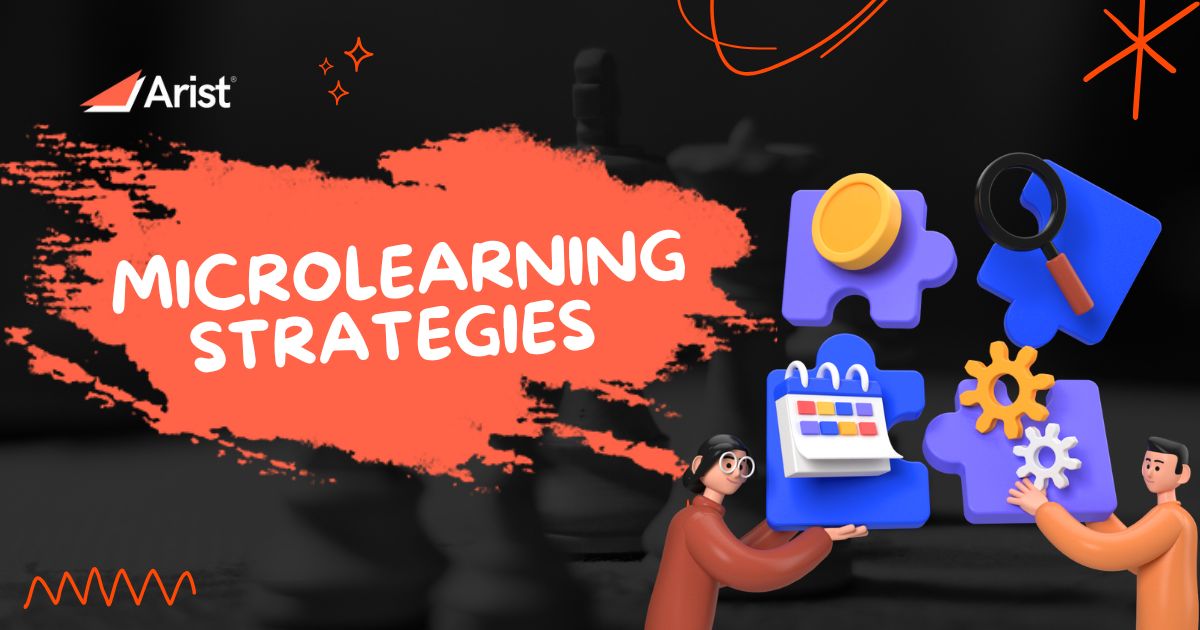5 Microlearning Strategies to Boost Employee Productivity
Long, tedious training sessions are a thing of the past, but many companies are still stuck in outdated methods that waste time and drain productivity. Employees don’t have hours to sit through lengthy courses; most information is forgotten within days.
That is how AI-driven tools are flipping the script and delivering training to your employees. If your company isn’t adapting, you’re already falling behind. So, why not explore new training ventures with the advent of AI?
Microlearning Adapted To Today's Workforce

Microlearning is designed to integrate into today’s digital-first and changing work environment seamlessly. Employees constantly manage tasks, deadlines, and responsibilities, leaving little time for traditional, long-form training. Microlearning solves this by breaking down complex topics into short, digestible lessons that can be completed in minutes, anytime, anywhere.
With mobile accessibility, AI-driven personalization, and integration into everyday tools like Slack, Microsoft Teams, and email, microlearning adapts to how modern employees work and learn. Whether it’s a quick video, an interactive quiz, or a text-based lesson, this approach ensures that training is relevant, engaging, and immediately applicable, boosting retention and productivity without disrupting workflows.
To gain an in-depth understanding of microlearning best practices, read our blog: “Microlearning In 2025: Research, Benefits, Best Practices.”
Here's how you can boost your employee's productivity using microlearning strategies.
1. Bite-Sized Learning Modules
Modern employees juggle multiple daily tasks, leaving little time for lengthy training sessions. Bite-sized modules provide quick, focused training that delivers essential knowledge in just a few minutes. These short bursts of information help employees retain key concepts more effectively and reduce cognitive overload.
Since these modules are designed to be mobile-friendly, employees can access training whenever and wherever they need it, whether during a break, between meetings, or while commuting. This flexibility ensures that learning is continuous without interrupting productivity.
2. Just-in-Time Learning
One of the employees' most significant challenges is retaining information they don’t immediately apply by providing training exactly when employees need it. For example, a salesperson preparing for a client pitch can quickly access a short video or reference guide to refresh their knowledge of a product’s key features.
This approach can boost confidence, enhance problem-solving skills, and reduce dependency on managers or colleagues for quick answers. With microlearning embedded into digital libraries, chatbots, or AI-driven platforms, employees can independently find solutions and perform better.
3. AI-Powered Personalized Learning
Every employee has different learning needs and skill levels, ensuring that each receives personalized training based on progress, job role, and performance.
AI analyzes learning patterns and automatically recommends the most relevant content for each employee. Instead of a one-size-fits-all approach, companies can provide customized training paths focusing on areas where employees need improvement, making learning more efficient and engaging.
4. Gamification and Interactive Learning
Traditional training often lacks engagement, leading to low participation and completion rates. Conversely, gamification transforms learning into an enjoyable experience by incorporating challenges, leaderboards, rewards, and interactive quizzes.
Earning points, badges, or certificates for completing training boosts motivation and encourages friendly competition. This approach makes learning fun and reinforces concepts through hands-on activities, increasing knowledge retention and application.
5. Seamless Integration into Workflows
For training to be truly effective, it should be embedded into daily work routines rather than treated as a separate, time-consuming task. Microlearning can be seamlessly integrated into platforms like Slack, Microsoft Teams, and email, making it easy for employees to learn while they work.
Instead of scheduling dedicated training sessions, organizations can deliver learning through short messages, quick quizzes, or interactive prompts during regular workflows. This eliminates the need for employees to pause their work while encouraging continuous skill development.
Enhance Employee Productivity with Smart Microlearning
The working environment tends to be competitive, so employees need engaging, accessible, and relevant learning experiences that fit seamlessly into their busy schedules. With a microlearning strategy, companies can deliver bite-sized modules and on-demand training; organizations can boost productivity, enhance retention, and drive continuous improvement without overwhelming their workforce.
With Arist’s AI-powered microlearning platform, companies can:
Deliver training through SMS, Slack, Teams, and email with no extra apps needed
Personalize learning paths with AI-driven recommendations
Reduce training time and costs by eliminating lengthy courses
Increase engagement with interactive content and gamification
Track progress and measure impact with real-time analytics
Book a demo today and transform learning into a seamless experience!
Arist Team
Bring
real impact
to your people
We care about solving meaningful problems and being thought partners first and foremost. Arist is used and loved by the Fortune 500 — and we'd love to support your goals.
Curious to get a demo or free trial? We'd love to chat:


